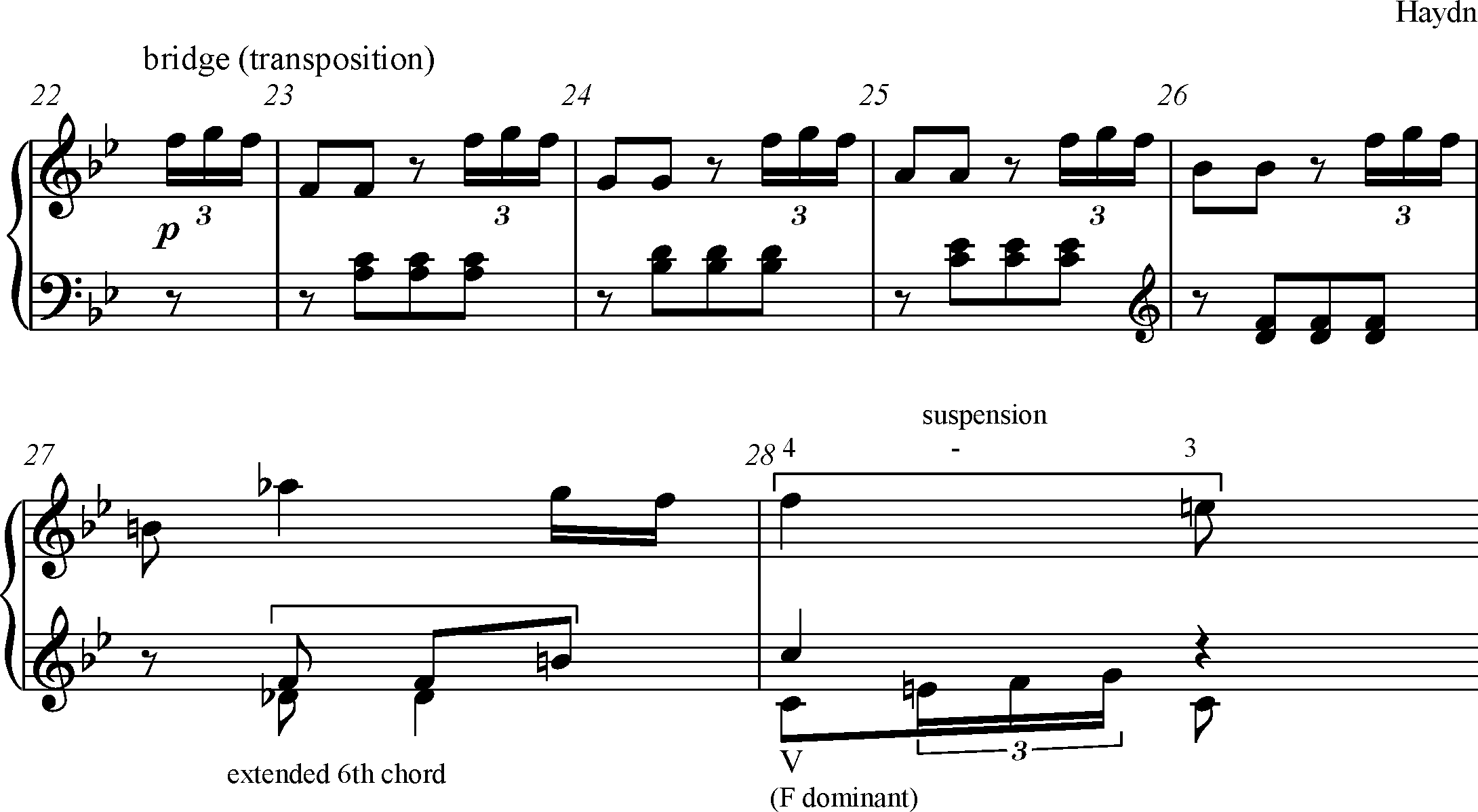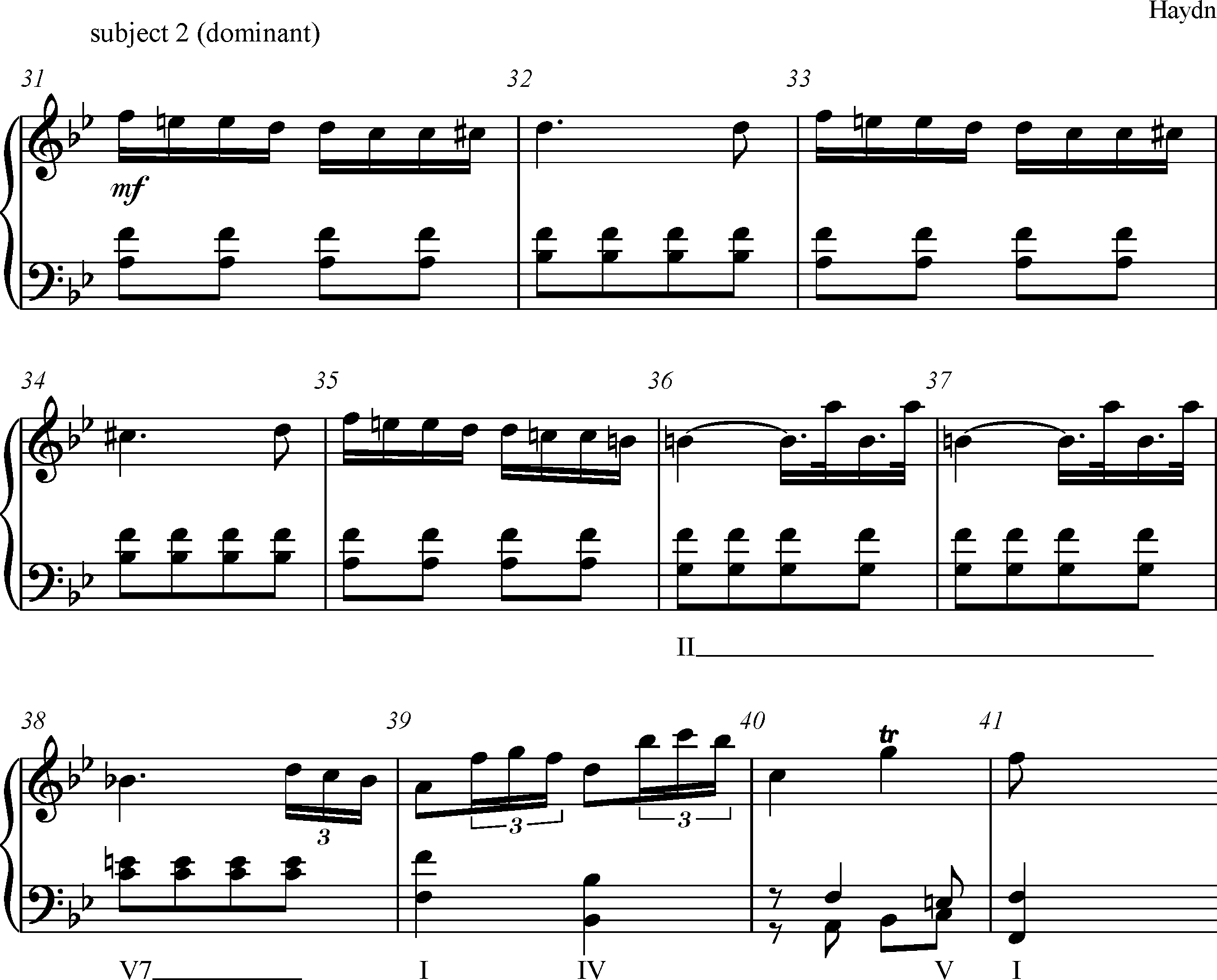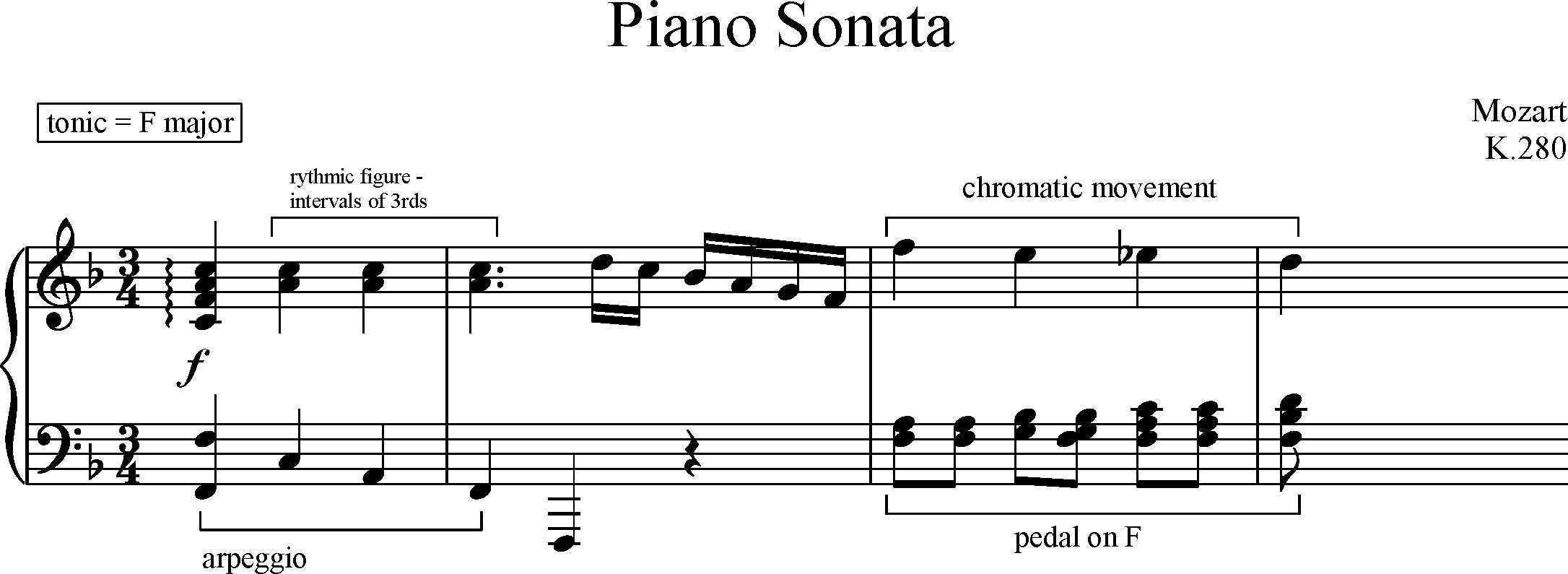Exercise 1
Listen to the Sonata in B♭ major for piano by Haydn (Hob.XVI/2). The quotations below (figures 1-3) give an outline of the exposition.
Fig. 1

Fig. 2

Notice Haydn’s use of dynamics and how they contribute to the character of each section.
- Which elements of the 1st Subject does Haydn develop in the bridge?
- What changes in terms of harmony?
Fig. 3

- How is the 2nd Subject different to the 1st Subject
- How does Haydn confirm the new key?
The exposition ends in the dominant key (F major) then – as is usual – Haydn repeats the exposition in its entirety.
The development begins at bar 62 with the 1st Subject now being played in the dominant.
The following section travels through a number of keys.
| Bar | Key | Material |
|---|---|---|
|
71 - 76 |
E♭ major F major G minor |
Triplet figure |
|
77 - 83 |
G minor D minor C minor B♭ major |
2nd subject |
|
84 - 89 |
E♭ major F major G minor |
Triplet figure |
|
912 - 95 |
C minor B♭ major |
Exposition’s codetta |
|
96 - 101 |
E♭ major B♭ major |
Bridge (repeats bars 17-22 from the exposition) |
The recapitulation starts at bar 102 but is slightly shorter than the exposition.
The bridge – which is also shorter (only 8 bars) – connects the 1st Subject to the 2nd Subject.
The 2nd Subject is now in the tonic key which leads to the coda (bar 131).
Exercise 2
Listen to the first movement of the Piano Sonata number 2 (K.280) by Mozart.
Mozart introduces a number of features that might become material for development in the course of the movement; but which ones does he develop? Analyse this sonata as you did with Haydn’s sonata in Exercise 1.
Fig. 4

There is a good example of Mozart using sonata form in the first movement of his Symphony No 29 (A major, K.201).
As the sonata form evolved in the hands of composers of the late Classical period, consider how Beethoven has adapted the form in his Sonata No 21 in C major (the Waldstein).
Also listen to Schubert’s Unfinished Symphony No 8, D.759) Schubert. The following link is to a score showing the divisions of the sonata form in the 1st movement.
- Consider firstly how both composers have extended the harmonic plan of their compositions and by doing so have led the way to some of the practices of composers in the Romantic period.